I’m trying to learn Dwarf Fortress the hard way. (Part one is here.)
After a long trek my brave dwarfs had arrived at the location in which they would build their doomed fortress. The first thing I did was to pause the game and consider the circumstances. Here you can see the screen I was presented with.
At the centre is a box I took to be the wagon that had hauled my dwarfs’ gear, and around it milled characters representing my dwarfs and their pets and work animals. They stood on a field of grass dotted by trees, next to a promising cliff face. To the south was a ribbon of blue which could be nothing but the stream I had insisted on in the embark site. This much my prior knowledge and practised ASCII-gamer’s eye allowed me to determine. Now my great task was to figure out how to order my group to accomplish things.
My first step was to consult the online help, something I hadn’t really expected the game to have based on my experience with free indie games in general and the reputation of this game in particular. It was, however, out of date and almost completely useless: apart from brief general pointers it only included a list of the menus and their content, which I could discover for myself just by opening said menus. It didn’t really explain what the various options were for or how they were used. It was time to start experimenting.
Most everything in Dwarf Fortress is accomplished through keyboard short cuts, and most helpfully you can have the top level commands listed on the screen at all times, even if it isn’t always obvious which one governs the thing you are trying to get done. I started by going through them all looking for options that seemed to make sense at this early stage. I also used the view mode to have a closer look at the environs. Somewhat confusingly Dwarf Fortress has two look commands, one that lets you look at objects and creatures and another that gives you a closer look at your dwarfs and allows you to modify their labour settings, with no easy way to switch between them.
Then there’s a third look mode that let’s you see items inside buildings. And I suppose you could count the mode which lets you issue orders to workshops and see what they are doing. And the designation mode which not only lets you designate things, but view existing designations. And activity zones are only visible when in activity zone mode, naturally. Streamlined this interface is not, and I suspect it reflects divisions of entities on the code level.
Here you can see the fruits of my menu-delving. In the first round of orders I designated a shaft to be dug into the cliff face and some trees to be cut. I also set up a stockpile for logs and another for refuse, the first instance of my foreknowledge working for me: I knew that rotting items emit clouds of miasma which annoys the dwarfs, so it’s advisable to place the dung heap out in the open. The highlighted square is an activity zone set up to be a pasture, where I ordered the horses to be taken and where I hoped they would feed by themselves.
When I unpaused the game the dwarfs sprung to work on the tasks I had given them and my fisherdwarf headed for the stream on his own initiative. I wasn’t sure where he was going to store his catch but I let him be for now. I watched my guys for a while as they ran to and fro, with symbols flashing on them every now and then. I had absolutely no clue what was going on: the status indicator symbols are just one thing online help doesn’t bother explaining. Work seemed to be progressing, however, so I decided to trust that the little buggers knew what they were doing.
As my miner made progress tunnelling into the rock I created a general stockpile in order to move my gear indoors. The room at the top would house the staircase connecting the different levels of the fort. It took me a while to figure out how stairs worked, but in the end it turned out to be easy enough: a down staircase on one level needs to connect to an up staircase on the level below. Steps down can be designated on the floor, but I left in a column of rock to carve two-way staircases as I intended to also tunnel up to find some soil to grow crops on. I had gathered from Let’s Plays I’d read that cultivation required soil or irrigation, and I didn’t want to start messing with waterworks yet.
At this stage of the game I was pretty much at the mercy of my single miner, and the rate at which he carved out rooms was the rate at which my fort took shape. I didn’t want to build anything outdoors as that seemed undwarfy to me. Here we see my miner finishing the second room on the level below the entrance, and the carpenter’s workshop under construction. This level would eventually house most of my industry and the related stockpiles. Building workshops was easy enough: the gigantic build menu has a subcategory for workshops, you select one with the corresponding hot key, place it on the map, and choose the building material from a list.
The process of building up the basic industries was pretty much trial and error for me: basically I scanned the list of available workshops and tried to guess which it made sense to build early on, and which should be left until later. A carpenter’s workshop was an easy pick, as was mason’s. Another workshop that struck me as useful early on was a craftdwarf’s shop. The name is not very illuminating, but it’s a general workshop where many everyday items from pots to crossbow bolts get made. They can also churn out miscellaneous trade fodder; early on my fortress was mostly exporting mussel shell crafts.
Back at the entrance level my quest to figure Dwarf Fortress out continued on another front. As you can see, the gear from the wagon has been moved indoors, sharing the stockpile with some early efforts of my workshops; the dedicated stockpiles were not built yet. Across the stockpile is a room I intended to serve as barracks, but it was too early yet to delve into the matters military. In the meanwhile I designated the room as a meeting area so the dwarfs would have some place to hang out that was not exposed to the elements; previously they were congregating around the wagon when on a break. At the time all the dwarfs were busy working, but the two dogs they had brought with them are chilling there. The dogs were both male so there wouldn’t be any more for the time being.
The eagle-eyed reader might notice that the small room at the top of the image has acquired some new features: specifically, to the west from the two-way staircase marked by ‘X’ is an upwards staircase, and to the north of that is an upwards ramp. These are the results of my experimentation with digging upwards. Digging downwards is easy. Building stairs so your diggers can get back up again is not much harder. Digging up took me a few tries. Eventually I succeeded by digging a ramp leading upwards, which I suppose also cleared out the square one level up, and building a staircase on it so the dwarfs could reach the surrounding tiles on that level.
The level above had some nice soil on which I managed to plop down some farm plots. The finer points of farming were lost to me and I had no idea how much farmland was needed per dwarf, but the impression I had was that it was “less than you’d thinkâ€: dwarf agriculture, which takes place underground in the dark, on soils mostly consisting of clay and sand, is much more productive than the boring regular kind that relies on sunlight and water and nutrients.
I started with two three-by-three plots, which could each grow one type of crop every season. One I set to grow plump helmets throughout the year, as I had also formed the impression that plump helmets were the dwarf staple crop, and the other I set to grow a combination of the other plants I had seeds for, but the use of which was a mystery to me.
Here we see some dwarf creature comforts. To the west of the central staircase are the (at this point fairly idle) kitchen and the fishery where my fisherdwarf’s catch gets cleaned up. There is also a room for the most important workshop of them all: the still. To the east are the dining room, food stockpile, and a dormitory. As the presence of the dogs might hint, the dining room had now become the preferred meeting area.
Dwarfs prefer eating at a table and sleeping in a bed to doing so on the floor. To accommodate their needs the dining room is furnished with two tables and chairs built by the mason, while the dormitory has five wooden beds courtesy of the carpenter. Both rooms also have doors.
Creating special rooms is a little more complicated than building workshops. Once you have placed certain pieces of furniture, which is done much like building a workshop, you can use that furniture as an anchor for a room designation. You can’t explicitly set the dimensions for a room, only increase or decrease the size, though it will try to follow the contours of the space it’s in. I found that without a door a room designation all too easily spills out onto a corridor or an adjacent room.
At this point I felt like I had achieved a milestone and could take a little breather. My dwarfs had a place to sleep and a place to eat, crops were growing, booze would be made, and the budding industry of Ustuthodom was slowly getting off the ground. So far, life was good in The Fair Hills. I suspected this happy state of affairs would not last.
Next: Midsummer crisis.
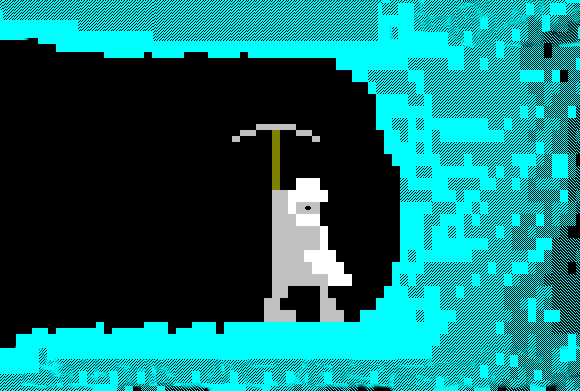
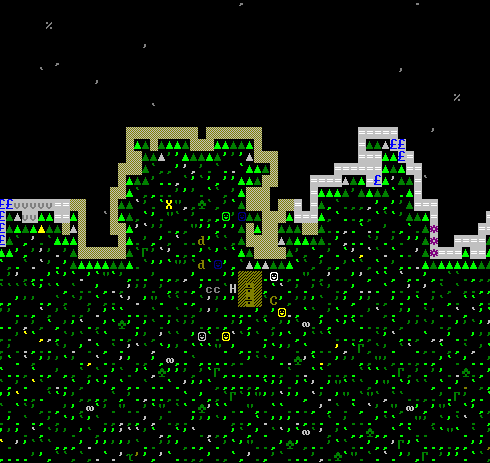
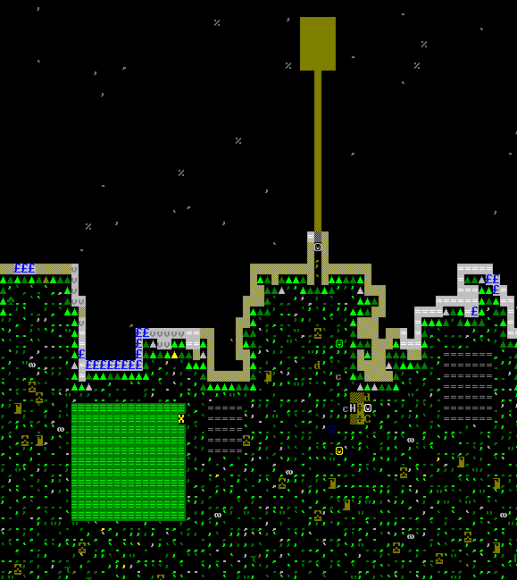
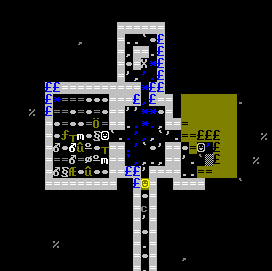

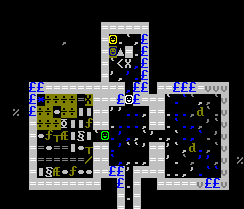
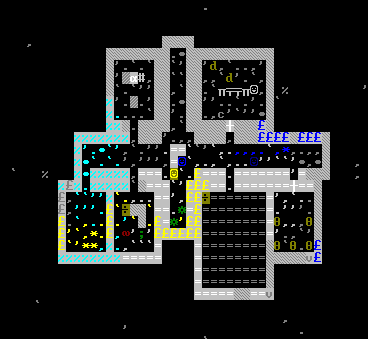
Comments
3 responses to “Man cancels life: went insane, part 2”
[…] Â Next: I strike the earth. […]
[…] I’m trying to learn Dwarf Fortress the hard way. (Check out parts one and two.) […]
[…] trying to learn Dwarf Fortress the hard way. (Check out parts one , two and […]